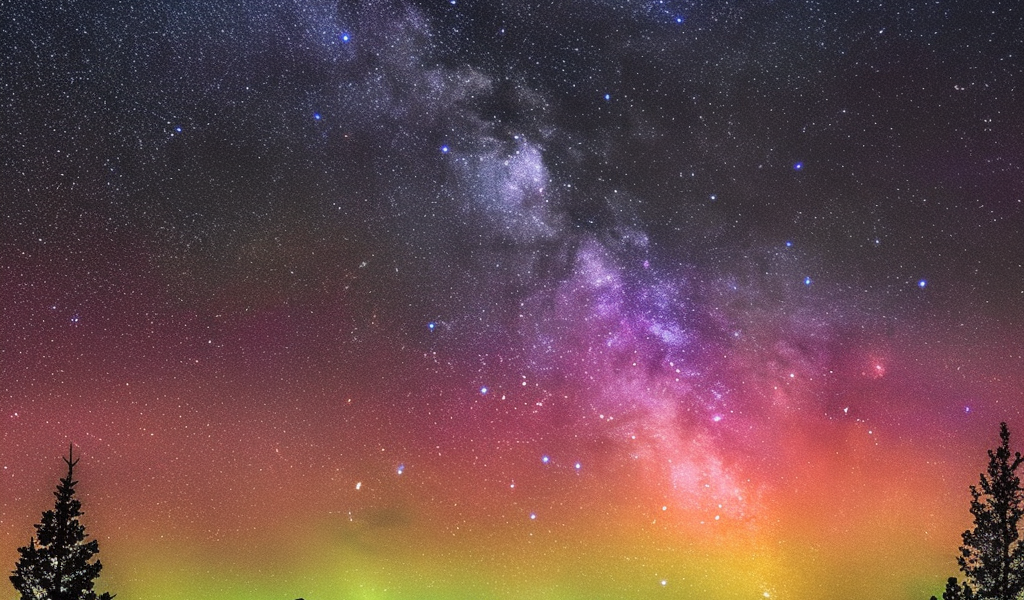In the heart of northwest Montana, a celestial spectacle awaits those who venture into its darkened skies. Renowned for its breathtaking daytime vistas of the Rocky Mountains, this region transforms into a stargazer’s paradise after sunset, offering unparalleled opportunities to explore the cosmos.
The vast, undeveloped stretches of the Bob Marshall Wilderness Complex to the east, along with the stunning landscapes of Waterton-Glacier National Park and the Whitefish Mountain Range to the north, create an ideal setting for stargazing enthusiasts. In 2021, Glacier National Park earned the prestigious designation of an International Dark Sky Park, joining the ranks of over 200 certified Dark Sky Places globally. This certification came after rigorous evaluations, including a comprehensive inventory of every exterior light fixture within the park, leading to a transition to lighting that adheres to dark sky requirements.
According to Pete Webster, the Deputy Superintendent of Glacier National Park, “Dark night skies are an important wilderness characteristic at Glacier National Park. Clearly seeing the expanse of the universe increases a person’s sense of solitude well beyond that of the terrestrial landscape.” The park now boasts a sky-quality meter rating between 21.5 and 21.8, just shy of a perfect score of 22, which indicates a moonless night devoid of artificial light.
Not far from Glacier, the Lost Trail National Wildlife Refuge, nestled within the Salish Mountains, is also recognized as a Dark Sky Sanctuary. This 9,225-acre refuge meets the same stringent criteria for dark sky status and features an interpretive exhibit dedicated to dark sky conservation. Visitors can access maps designed to enhance their stargazing experience and learn about the importance of preserving these celestial views.
Dark sky initiatives not only enhance the stargazing experience but also play a vital role in wildlife conservation. Many species within the Lost Trail Refuge are nocturnal, including 13 species of bats, eight species of owls, and numerous amphibians and reptiles. The preservation of naturally dark skies is essential for maintaining the health and habitat of these animals, ensuring they thrive in their natural environment.
As the fall season approaches, stargazers are encouraged to look up and take advantage of the clear, dark skies. One of the most spectacular phenomena to witness is the Aurora Borealis, commonly known as the Northern Lights. This breathtaking display occurs during periods of heightened solar activity, when geomagnetic storms near the North Pole create mesmerizing waves of green, orange, and red light across the horizon.
The solar cycle, which spans approximately 11 years, is expected to peak during the winter of 2024-2025, presenting an extraordinary opportunity for observers to witness this natural wonder. Stargazers can stay informed by checking the NOAA aurora forecast, which provides updates on solar activity and the likelihood of auroras.
For those planning a trip to northwest Montana, the combination of pristine natural landscapes and the allure of dark, starry nights makes it an exceptional destination for stargazing. Whether you are a seasoned astronomer or a casual observer, the region offers a unique chance to connect with the universe in a way few places can.
As you prepare for your stargazing adventure, consider bringing along a telescope or binoculars to enhance your experience. Familiarizing yourself with the night sky can also be beneficial; apps and star charts can help you identify constellations, planets, and other celestial objects.
In addition to the Aurora Borealis, fall brings several meteor showers that are best viewed in dark skies. The Orionids, peaking in mid-October, and the Leonids, peaking in mid-November, are two notable showers that can be spectacular when viewed away from city lights.
Northwest Montana’s commitment to preserving its dark skies not only enriches the experience for visitors but also fosters a deeper appreciation for the natural world. The region’s efforts to maintain low light pollution levels contribute significantly to the health of its ecosystems and the enjoyment of its inhabitants.
As more people seek to escape urban environments and reconnect with nature, the allure of dark sky destinations like those found in northwest Montana is likely to grow. With its stunning landscapes, rich wildlife, and celestial wonders, this region stands out as a premier location for anyone looking to explore the night sky.
In summary, northwest Montana is a treasure trove for stargazers and nature lovers alike. The combination of its International Dark Sky Park and Sanctuary designations, along with the breathtaking natural beauty of the area, makes it a must-visit for those wishing to experience the magic of the cosmos. So grab your gear, head to the dark skies, and prepare to be amazed by the wonders that await you above.





